| ILFORD HP2, HP3, HP4 and HPS Films and Plates |
|
|
|
|
|
|
|
|
HP2 emulsion was first coated onto glass plates in 1937. Roll and 35mm versions appeared in 1938 and cut film (sheet film; flat film) appeared in 1940. Emulsion speed at first introduction was 100 ASA (ISO), equivalent to 200 ASA (ISO) after the 1960 speed re-rating. Note, however, (below) that Ilford were marketing cut film as 125 ASA (ISO) by 1941. Whether this fractional speed increase was just to give a marketing emphasis to the new HP2 emulsion or whether HP2 was rated upwards from its original 100 ASA to 125 ASA over the first years of its availability, is unsure. In 1940, HP2 cut (sheet) film replaced Ilford Hypersensitive Panchromatic sheet film. In the description of the film in the “New Goods” section in the British Journal Photographic Almanac for 1941 it was said the film was 2½ times faster in speed than the previous “Hypersensitive Panchromatic” sheet film (though this claim conflicts with Ilford's own information). The box of 6½ x 8½ inches (whole plate) sheet film shown below, dates from 1941 and is in packaging originally intended for the earlier version of Hypersensitive Panchromatic rated at 31 Scheiner, approximately 100 ASA (ISO). Ilford applied a sticker across the original label to show that it contained films with the HP2 emulsion, now rated at 32 Scheiner, corresponding to approximately 125 ISO/ASA. According to an instruction sheet for the films found inside the box, development times in ID-2 developer were 4 minutes for “Dish” development and 8 minutes for “Tank” development at 65°F. ID-2 was a medium grain fast working developer. If finer grain was required the film could be developed in ID-11 Fine Grain developer for 10 minutes for normal contrast or 15 minutes for greater contrast, both at 65°F. These times were for “Tank” development and could be reduced slightly for “Dish” development. Ilford ID-11 developer was the equivalent of Kodak D-76. |
|
 |
|
|
Below is shown an advertisement from the rear cover of an “Amateur Photographer” magazine, dated 7th December 1938, for the (then) new 35mm Selo HP2 35mm film with a speed of 31 Scheiner, or approximately 100 ISO/ASA. Press photographer, Lancelot Vining, tests the new film in an indoor venue without flash with difficult lighting at an exposure of 1/50th of a second at f2. The previous 35mm and roll film, “Selo Hypersensitive Panchromatic”, was rated at 30 Scheiner, or about 80 ISO/ASA. |
|
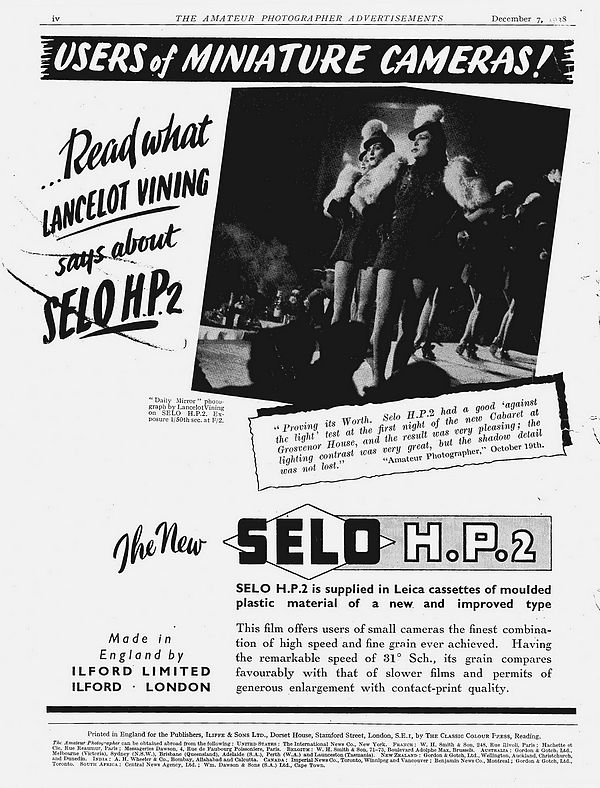 |
|
|
Roll and 35mm film versions
first appeared in 1941 and were initially slower at 125 ASA (equivalent
to 250ASA in the post-1960 speed rating system). |
||||
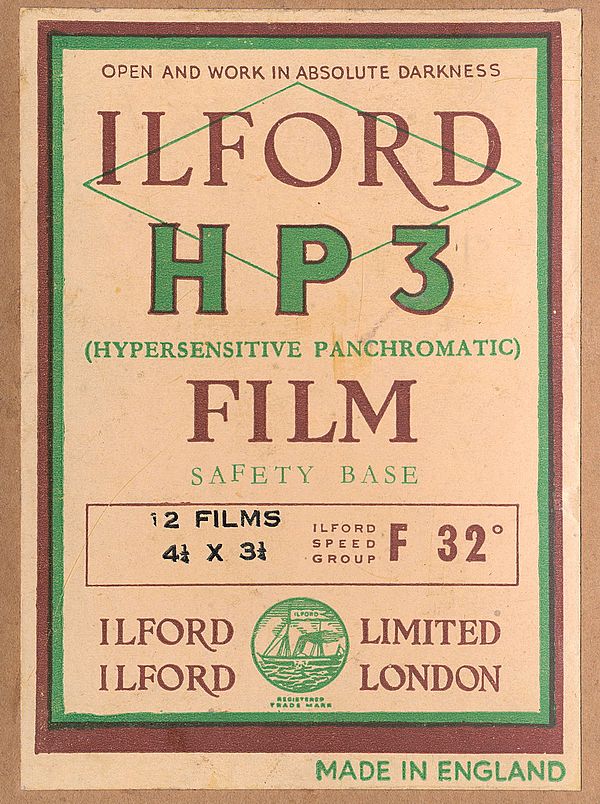 |
||||
|
|
||||
|
This image sent to me by Jim
Fisk of the Great Yarmouth Photographic Society (see the bottom of this web page) and friend
of Paul
Godfrey. He says "It came from the Charlie Read collection". The original instruction booklet for the Ilford Exposure Meter Model B (on its page 8) shows that, even at the time the booklet was produced (March 1938), the Ilford Speed Group range had already increased to include the letter 'F', necessitated by "the recent increase in speeds of Ilford Hypersensitive Panchromatic Plates and Films". This presumably refers to H.P.2 becoming available in the 35mm format in 1938. |
||||
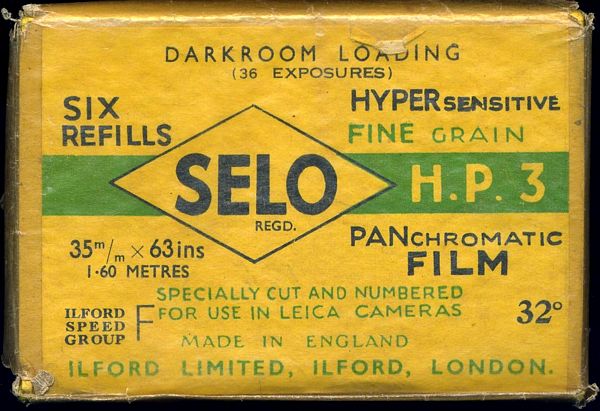 |
||||
|
|
||||
| HP3 120 Roll film packaging around 1960 | ||||
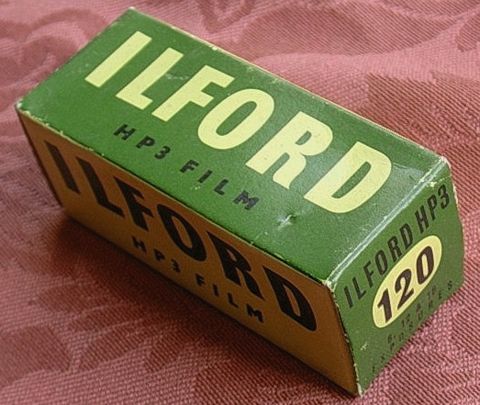 |
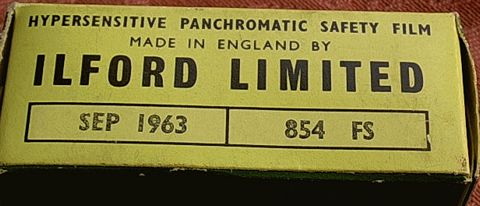 |
|||
|
|
||||
| HP3 35mm film canister from around 1953. It may have contained 'bare' 35mm film for insertion into a previously used cassette ~ hence the text saying to open in total darkness. The pictures are courtesy of Michael Talbert who says "The 'Develop Before' date stamped on the bottom of the canister is July 1955. The speed is given as '125 Weston', before the speed increase to 200 Weston which took place around 1955". From 1960 the speed rating became the more familiar 400 ASA (= Weston). | ||||
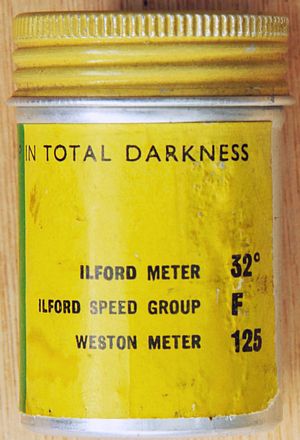 |
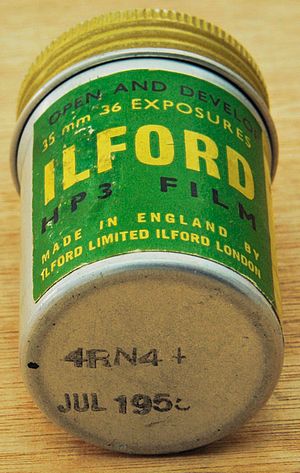 |
|||
| HP3 35mm film from the early 1960s (expiry date
October 1965). Because of its post-1960 manufacture, the speed
is now 400ASA (ISO). No actual sensitivity increase, just a re-appraisal
of how speed should be rated, as was adopted by all b&w film
manufacturers at that time. This box and cassette did not belong together originally, as the box refers to 20 exposures and the cassette to 36 exposures. |
||||
|
|
|
|||
|
|
||||
| The image below of tins of bulk 35mm HP3 and FP4 film, in 33m and 50feet tins for self-reloading cassettes, has been sent by Leon Chipchase. With the length of the earlier HP3 film (1941 to Dec 1969) being in metric (33metre) while the later FP4 film (from 1968 to 1990) is in imperial (50 feet), its possible that either the HP3 tins are from near the last batch or they were sourced from the continent (or the film was intended for sale on the continent). | ||||
 |
||||
|
|
|
|||
| Image below provided by Richard Bartle | ||||
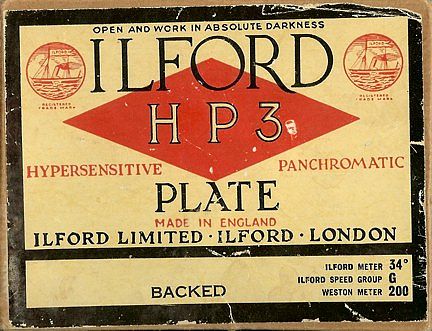 |
||||
| Image below courtesy of Jim Fisk | ||||
|
|
||||
|
|
||||
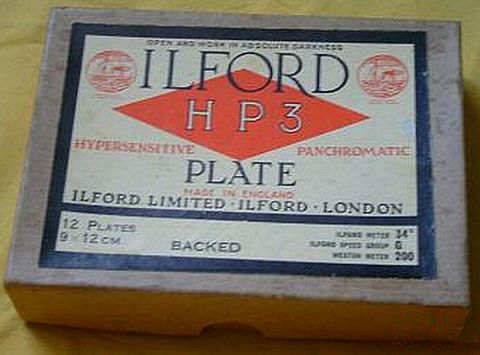 |
||||
|
|
||||
.jpg) |
||||
|
|
|
|||
|
Image below courtesy of Michael
Talbert This box contained HP3 Matt film, which had a matt finish on the non-emulsion side, giving the processed negatives a soft, flat appearance, although the contrast was not altered by the matt finish. The purpose of the matt finish was to give a surface for re-touching of the negative in pencil or dye, as might be required for portrait negatives. It was much easier to re-touch in pencil onto a matt surface which would otherwise have been glossy. HP3 films and plates were widely used for portrait photography in the 1950s and 1960s. |
||||
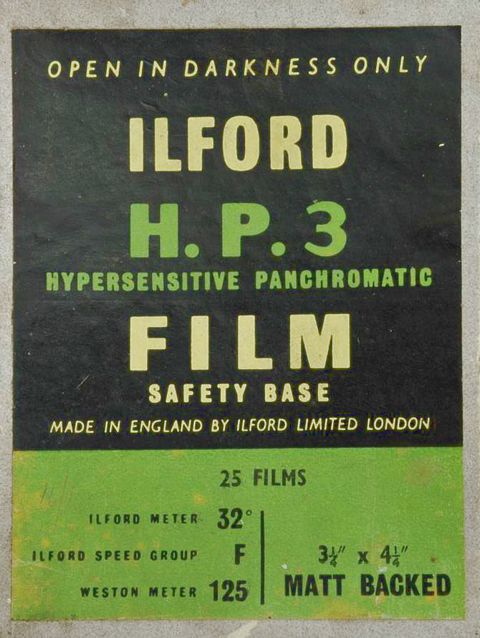 |
||||
| Another box of
HP3 sheet film (aka sheet film or cut film), this one later thn
above, dating from post-1955. Image by courtesy of Michael
Talbert. The date is known from the stated speed rating of 200 Weston. Ilford increased the speed of their HP3 flat film and other formats to match Ilford's HP3 plate speed. This box dates from within the date range 1955 to 1961; thereafter red and black sheet film boxes were introduced. |
||||
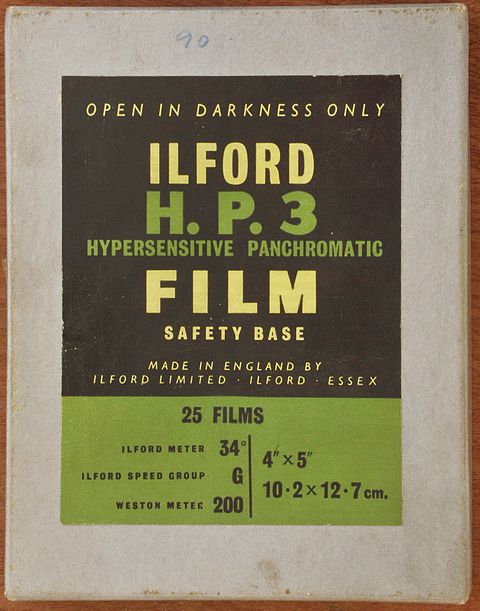 |
||||
| Michael Talbert reports: A box of HP3-M (Matt) sheet film. The sheets have a matt surface on one non-emulsion side to facilitate any retouching to the negative, using either pencil or dye. It was possible that this box of film was packed as a “special order”, as it was unusual for Ilford to sell camera sheet films in 100 sheet boxes. The box dates from the mid-1960s and the date of “June 1968” stamped on the front label indicates the purchase date; not the expiry date of the film. As far as is known, HP3-M was the last Ilford sheet film made for camera exposures with a matt surface for retouching. | ||||
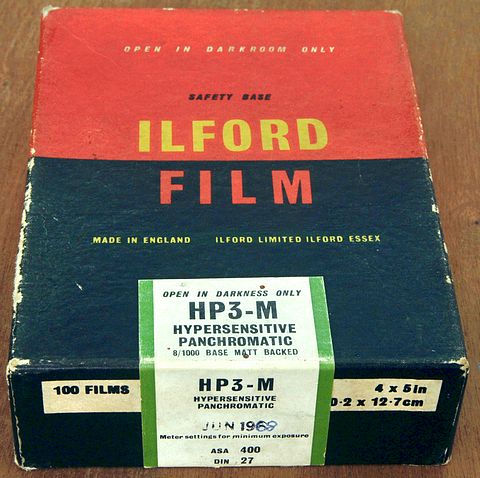 |
||||
| Below is another
picture of a HP3 sheet film box sent by Michael Talbert.
This one dates from around 1970. By this time, Ilford were making larger sealing labels. It is possibly amongst the last of the boxes of HP3 sheet film manufactured, before HP3 was replaced by HP4, mid-1967. HP3 continued to be available in parallel with the new HP4 until 31st December 1969. |
||||
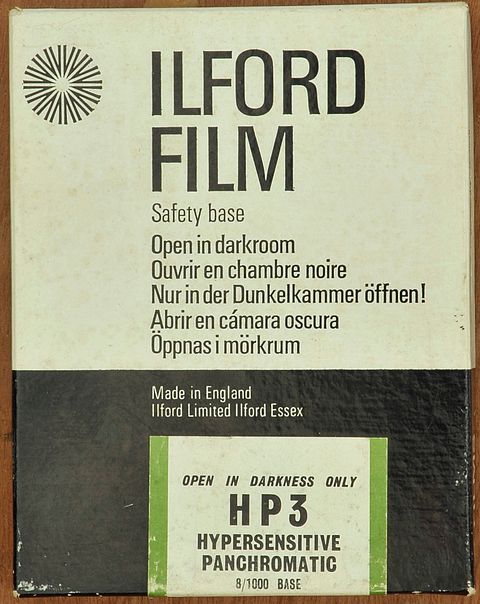 |
||||
| Below is a data sheet for Ilford Flat Films available in February 1962. | ||||
 |
||||
| Below is a data
sheet for Ilford Flat Films available in March 1968. Comparing these data sheets (above and below), HPS sheet film was no longer available in 1968. HP4 sheet film had a separate data sheet. |
||||
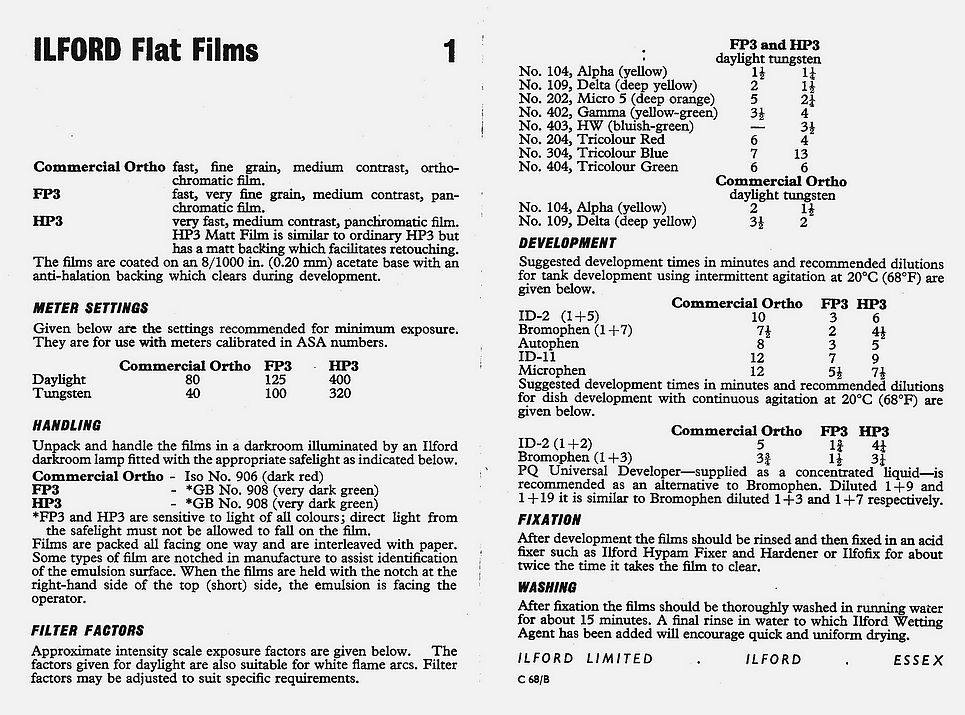 |
||||
|
|
|
|||
|
|
||||
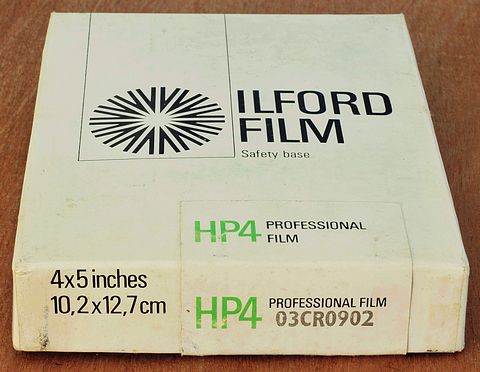 The reverse label can be seen to the right hand side. (courtesy of Michael Talbert; also HP4 images below) |
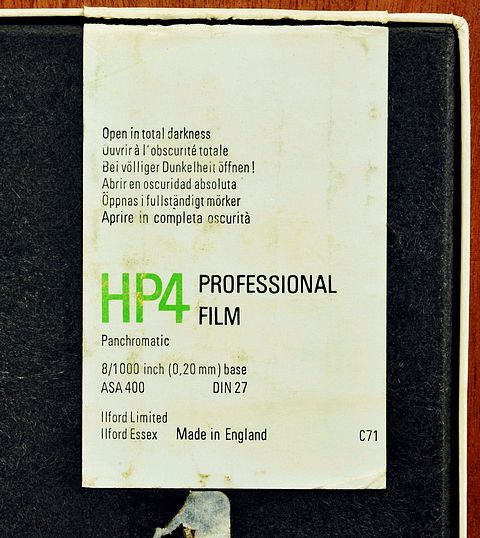 |
|||
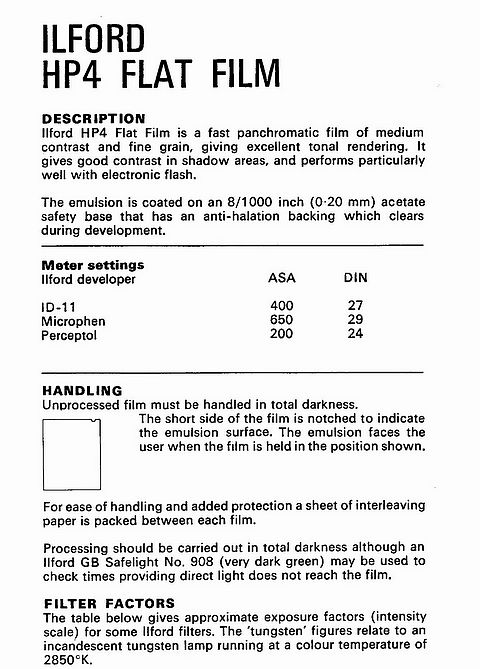 The lower half is shown to the right. |
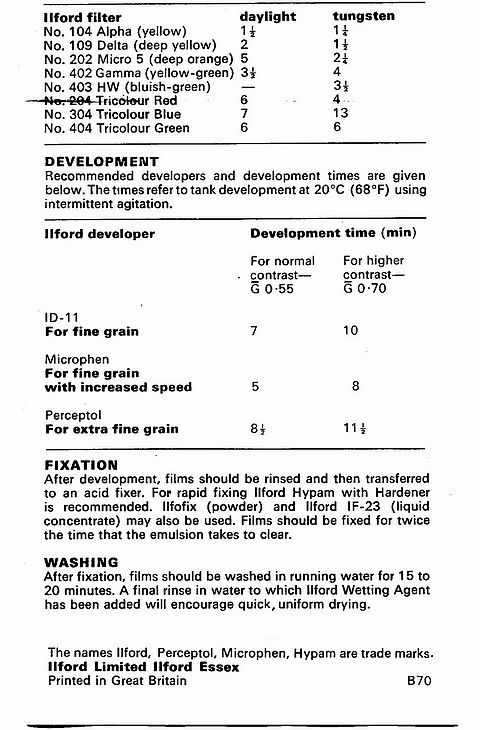 |
|||
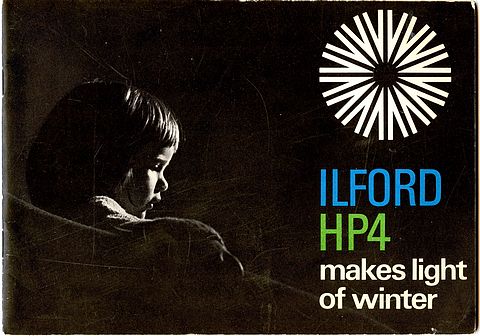 The new (in 1966) 'sunburst' company symbol is well included. |
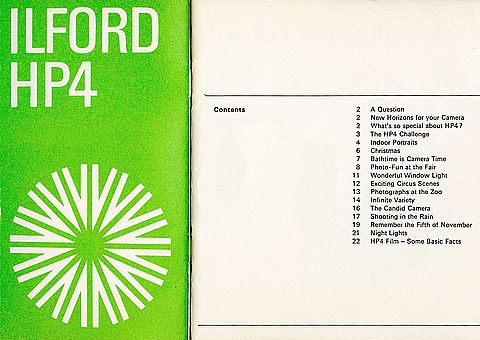 |
|||
|
|
|
|||
|
|
||||
|
http://www.KodakCollector.com |
||||
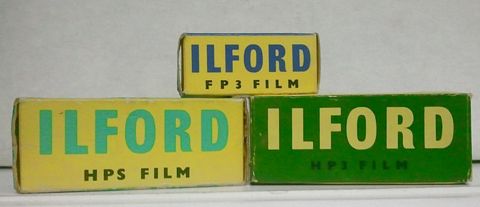 |
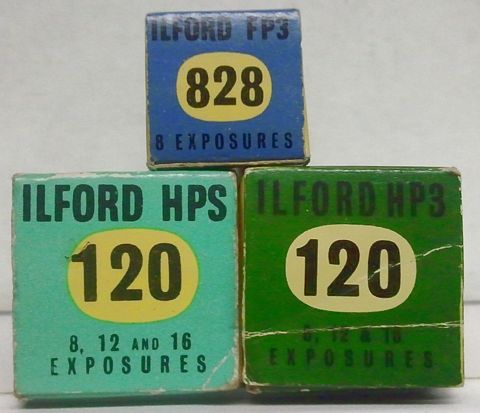 |
|||
|
The pictures below are of boxes of HPS 120 size roll film, with the backing paper marked for 8, 12 or 16 'exposures'; 'poses' (French); 'aufnahmen' (German). The three films were sent to me by Jean François Bonnin. Although all three film boxes arrived unopened, I have carefully opened one (as can be seen) to enable the accompanying leaflet to be scanned. The film appears to have been packaged in late 1965 or early 1966. It has an expiry date of June 1968. The post-1960 film speed (no exposure safety factor) is shown as 800ASA (ISO). The green/blue colour of two of the side panels of the film box proved difficult to duplicate by direct digital phtography so I have manipulated their colour in the pictures below, to try to match the original. |
||||
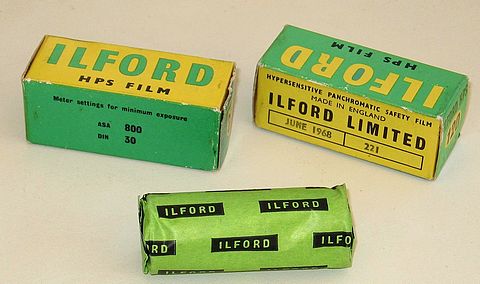 |
 |
|||
| The instructions are written in English, French, German and Swedish or maybe Norwegian (?) | ||||
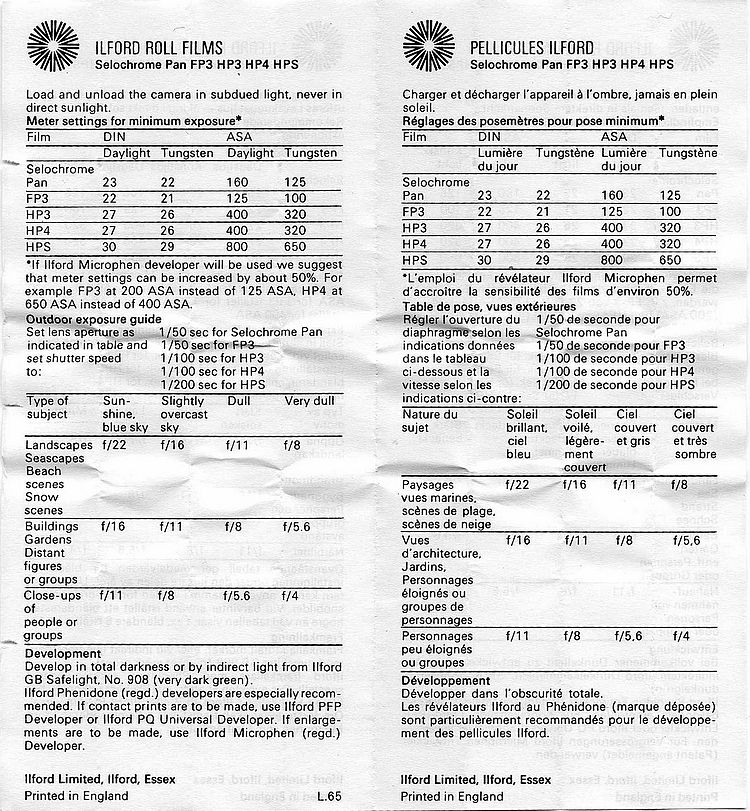 |
||||
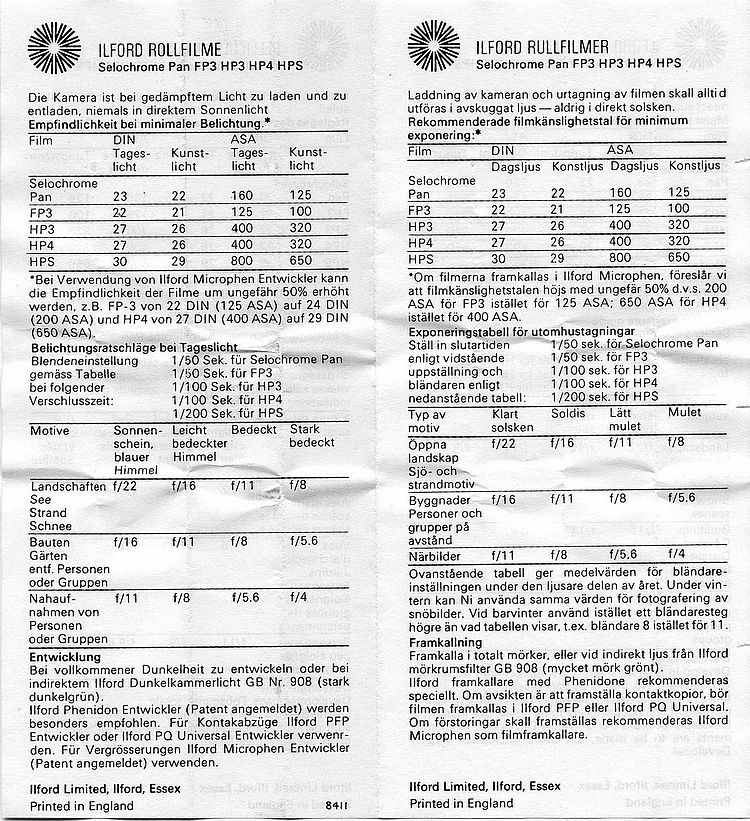 |
||||
|
|
|
|||
|
Image below courtesy of Michael
Talbert The HPS box dates from pre-1957, because it is labelled “Ilford Limited London”. After 1956 this became “Ilford Limited Essex”. Distribution of HPS sheet film had ceased by 1968. Roll film and 35mm HPS film production ceased by 1969. It was still possible to find out-dated boxes of HPS sheet film offered for sale at surplus photographic material dealers, such as A.W. Young, Marston and Heard, plus others, in the late 1970s. |
||||
 |
||||
| Below are two further examples of HPS plates packaged pre-1957. | ||||
 |
||||
|
|
|
|||
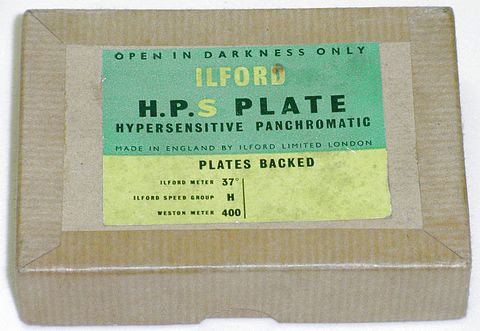 |
||||
|
|
|
|||
| The HPS cut film
packaging had changed by the early 1960s, as shown below. As best is known, Ilford didn't manufacture HPS sheet film after 1968; Ilford suggested HP4 (from late 1966) as a suitable replacement (image courtesy of Michael Talbert). |
||||
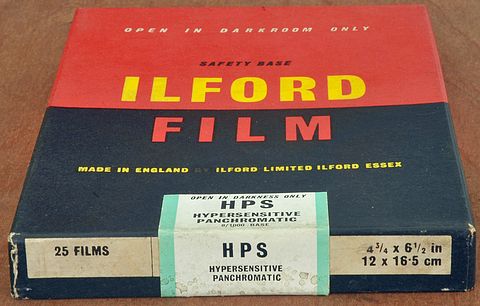 |
||||
| The HPS box of
plates shown below (courtesy of Michael Talbert) dates from the
early 1960s; believed to be March 1961. The recommended speed
of the plates was then 800 ASA/ISO as shown on the rear
label. By 1961 the “Safety Factor” of exposing films and plates at half their actual speed had been abolished. Manufacture of HPS plates ceased in 1968. |
||||
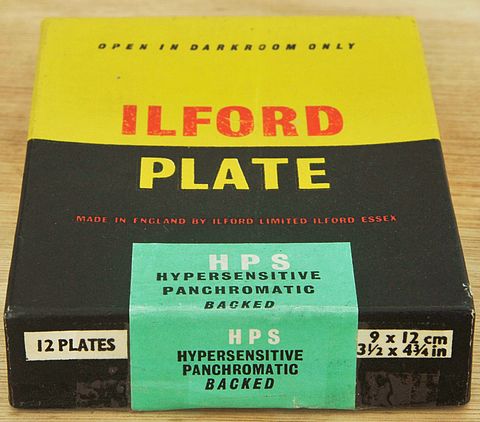 |
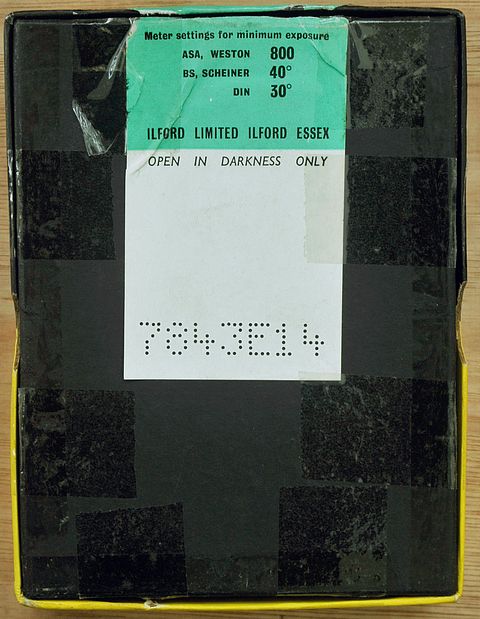 |
|||
|
||||
This page last updated: 29th November 2024 (previously: 26th August 2019)